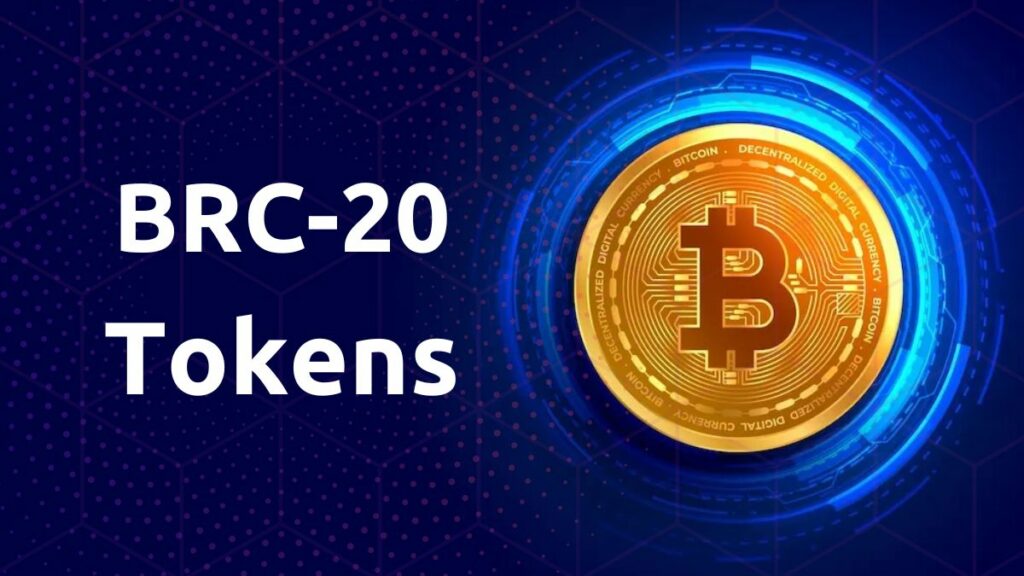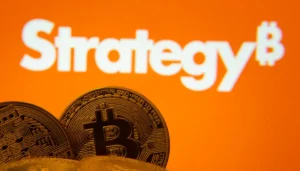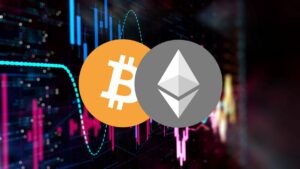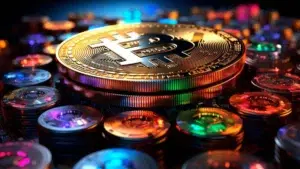The BRC-20 standard is revolutionizing the Bitcoin blockchain and promises to give Ethereum a fight in the Decentralized Finance domain. It has quickly become one of the most popular token standards due to its high utility and use in various decentralized projects.
BRC-20 tokens, despite their widespread popularity, are still in the experimental phase, and users are advised to be cautious when using them. This revolutionary technology has altered the way people perceive wealth and holds great promise for future advancements and innovations.
What is BRC-20?

BRC-20 tokens are a novel type of interchangeable tokens that can be created and transferred on the Bitcoin blockchain. They are based on an innovative protocol known as Ordinals, which enables users to insert data into Bitcoin transactions. The BRC-20 token standard is comparable to the ERC-20 token standard used on Ethereum and other EVM-based blockchain networks.
This tokens are generated using JavaScript Object Notation (JSON) inscriptions on satoshis via Bitcoin ordinals. They are similar to smart contract tokens, with the JSON defining the fundamental characteristics of the BRC-20 token. However, inscriptions cannot be modified. Which is a very significant difference from tokens based on smart contracts which can be altered.
In addition to reaping the benefits of Bitcoin’s fame and reputation, BRC-20 tokens also inherit the security and decentralization of the Bitcoin network and can be exchanged between individuals, just like any other cryptocurrency. Although BRC-20 tokens function similarly to regular crypto tokens, they are powered by a nearly distinct back-end technology and are created in a completely unique manner.
What Are BRC-20 Tokens Good For?

These tokens can be sent between wallets, regardless of their physical location, and the transaction fees are paid in Bitcoin. This makes BRC-20 tokens a convenient and efficient way to transfer value.
Decentralized finance (DeFi) is still in its early stages on Ethereum and EVM networks. However, the introduction of BRC-20 could mark the beginning of DeFi on the Bitcoin blockchain, as BRC-20 is more flexible and can be integrated with decentralized protocols.
Because of its great versatility, BRC-20 can also be integrated into yield farms, decentralized exchanges and loan protocols, among other possibilities. For example, ordinalswallets.com is a platform that allows users to transfer, trade, and mint both BRC-20 and Bitcoin NFTs. As the BRC-20 technology continues to evolve, it is likely that more platforms like this will emerge, offering similar services and capabilities.
Most Popular BRC20 Tokens and Their Uses
Ordinals (ORDI)
The Ordinals project is based on Satoshi’s Ordinals protocol and does not require any changes to Bitcoin or the use of side chains or additional tokens.
The protocol allows the inscription of various types of information, including text, images, audio, and video, onto individual satoshis. Due to the size limit of Bitcoin blocks, the primary data inscribed (or mint) is text and images in the form of NFTs and tokens.
Piza (PIZA)
$piza is a memecoin that exists solely for entertainment purposes and has no inherent value or expected financial return. It is not backed by an official team or development plan.
Pepe (PEPE)
Pepe is a cryptocurrency project that draws inspiration from other meme-based coins such as Dogecoin and Shiba Inu. These projects have provided hope to many in the crypto community, and Pepe aims to be the top meme-based cryptocurrency. The goal of Pepe is to establish a crypto community with no taxes, a burning mechanism to preserve its value, and a system of redistribution to reward long-term stakers.
Meme (MEME)
This BRC-20 project has the potential to take off. The coin has a maximum supply of 99,999 MEME, making it a fairly scarce memecoin, unlike other similar ones that have much larger supplies.
Darc (DRAC)
$drac, named after the vampire Count Dracula and the vampire number 1260, is a BRC20 token that sparked the beginning of the BRC20 inscription era. It attracted the attention and investment of many BRC20 enthusiasts.
BRC-20 Name Service (BTNS)
BTNS is the governance token for the BRC-20 Name Service project. Token holders can participate in decision-making and influence the project’s development. The success and sustainability of the BRC-20 Name Service project will depend on the $BTNS token, which allows multiple users to contribute to the project.
BRC-20 Tokens Pros and Cons

Pros
- Compatibility with the Bitcoin network, which allows it to leverage the network’s strength and popularity.
- Simplicity, which makes it easy to create and transfer tokens without complex smart contracts.
- Security, which benefits from the Bitcoin blockchain’s proven security features.
- Growth potential stems from the innovation and adoption of new projects and use cases.
Cons
- No smart contract functionality, which limits its capabilities compared to other token standards.
- Dependency on the Bitcoin blockchain, which exposes it to the network’s scalability and speed issues.
- Limited interoperability, which makes it difficult to transfer tokens across different blockchain networks.
- Limited utility, which makes it unsuitable for nonfungible assets or complex token features.
- Relatively smaller developer community, which may slow down its technological development.
Is It Worth Investing in BRC-20 tokens?
BRC-20 tokens have recently experienced a surge in value due to speculative interest. Many of these tokens, such as PEPE, are inspired by their ERC-20 and BEP-20 counterparts on the Ethereum and Binance networks. These tokens have achieved high valuations, attracting speculators seeking quick profits.
However, BRC-20 tokens have yet to establish themselves in the same way as ERC-20 and BEP-20 tokens. They currently only exist as inscriptions on satoshis without any additional functionality. Additionally, low trading volumes make these tokens vulnerable to price manipulation.
Conclusion
The BRC-20 market is growing rapidly, with over 14,000 different tokens already created using this standard. The market cap of BRC-20 tokens is rising, and the team behind the standard is working to improve its features.
As the DeFi space expands, we can expect to see more tokens and financial products using BRC-20. Despite its vulnerabilities, the current trend suggests that BRC-20 has a bright future in the world of cryptocurrencies.










